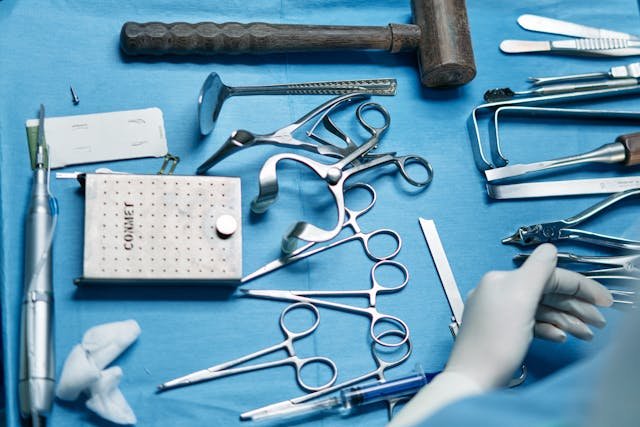Urologic procedures have come a long way over the past two decades. Previously dependent on open surgery with extensive incisions and lengthy hospitalizations, urology has undergone a revolutionary change with the advent of minimally invasive surgical methods. These methods now allow patients to enjoy shorter recovery periods, minimal pain, and better results. From robot-assisted surgery to endoscopy, the technology advances by leaps and bounds, promising greater accuracy and safety. Let’s have a look at the most important advances and the way they are revolutionizing the future of urological treatment.
1. Emergence of Laparoscopic Surgery in Urology
Laparoscopic surgery, or keyhole surgery, was one of the first minimal invasive techniques offered in urology. Rather than cutting large incisions, urology doctor use tiny cuts to place a camera and instruments, enabling them to work with better vision and precision. The technique is common in operations such as nephrectomy (removal of the kidney), prostatectomy, and pyeloplasty. Benefits include less postoperative pain, faster recovery, and less scarring. Furthermore, hospitalization is shorter, and there is a much lower risk of infection or blood loss compared to open surgery. Laparoscopic surgery continues to be the “gold standard” for most routine urologic procedures today.
2. Robotic-Assisted Urological Surgery
Robotic platforms such as the da Vinci Surgical System have transformed urology surgery. urology specialists can use robotic arms operated from a console to conduct intricate procedures with the utmost accuracy. The 3D magnified vision and increased instrument flexibility minimize nerve injury risk and enhance results in procedures such as robotic-assisted radical prostatectomy and robotic cystectomy. The movement of the surgeon’s hands is interpreted as micro-movements by the robotic arms, providing the finest control ever. Robotic surgery is particularly useful in sensitive procedures of the prostate or bladder, where the preservation of nerves is crucial to ensure urinary and sexual functions.
3. Endourological Innovations
Endourology is a process of conducting surgeries with instruments passed through the urinary tract without ever making an incision. Endourology is regularly applied in treating kidney stones, ureteral strictures, and bladder tumors. A few of the advances in this field include flexible ureteroscopes, laser lithotripsy, and percutaneous nephrolithotomy (PCNL).
One of the major developments is Holmium laser technology, where kidney stones are effectively managed with safe fragmentation. Such operations are typically conducted on an outpatient basis, with little pain and recovery time for the patient.
4. Image-Guided and Fusion Biopsies
Diagnosis and staging of prostate cancer have been significantly improved using MRI-ultrasound fusion-guided biopsy. Random sampling-based conventional biopsies occasionally fail to detect cancerous tissue. However, fusion technology places real-time ultrasound on top of high-resolution MRI images, accurately leading the biopsy needle to the area of suspicion.
This innovation enhances prostate cancer detection accuracy and minimizes unnecessary procedures. With early detection being key to successful treatment, this method is a significant development in urological oncology.
5. Laser Technology Developments
The use of laser energy in urology has progressed a great deal, particularly in the case of benign prostatic hyperplasia (BPH) and urinary stone treatment. Holmium Laser Enucleation of the Prostate (HoLEP) procedures are now favored over conventional TURP (Transurethral Resection of the Prostate) for the treatment of an enlarged prostate.
Laser procedures are less traumatising, reduce bleeding and speed up recovery. They are also very safe for patients with comorbidities or on anticoagulants, and hence enjoy immense popularity among high-risk patients.
6. Single-Port Surgeries and Miniaturization
A key advancement in minimally invasive surgery is the establishment of single-port robotic surgery. This procedure involves a single cut, usually at the belly button, where all the tools are introduced. This is less traumatic, gives better cosmetic outcomes, and still further minimizes recovery time. Concurrently, miniaturization of surgical equipment—mini-laparoscopy—allows surgeons to carry out even complex operations through very small cuts, lowering complications and post-operative pain even further.
7. Augmented Reality and Artificial Intelligence
New technologies such as AR and AI are increasingly being incorporated into intraoperative guidance and surgical planning. AI assists in the interpretation of diagnostic imaging, complication prediction, and individualized treatment planning. AR facilitates real-time projection of anatomical landmarks on patients during surgery, enhancing precision and minimizing dangers. Although in its infancy, the application of AI and AR in urology is full of potential to increase accuracy and patient safety, particularly with complicated procedures for cancer or congenital conditions.
8. Enhanced Postoperative Recovery and Monitoring
Technological advancements in anesthetics, pain management, and remote monitoring have reduced recovery time after urological surgery and made it safer. Application of Enhanced Recovery After Surgery (ERAS) protocols decreases hospital stays, decreases the use of opioids, and accelerates recovery to daily routines. Wearable technology and telemedicine also allow real-time monitoring of symptoms and vital signs, allowing for early intervention if there are any post-surgery complications.
Conclusion: Trust Bhanoo Hospital for Contemporary Urological Care
Minimally invasive procedures have revolutionized urological surgery, allowing patients to experience improved results with lower complications. From robotic platforms to laser accuracy and AI integration, the advancements still keep the level of care higher in this specialty.
If you or your loved one needs advanced urological care, Bhanoo Hospital is well-endowed with the latest surgical equipment and highly skilled professionals and is considered one of the best urology hospital. Our experts are devoted to delivering effective, compassionate, and minimally invasive care that meets your individual requirements.
Schedule your consultation with Bhanoo Hospital today and take the first step toward safer, quicker, and more efficient urological care.
